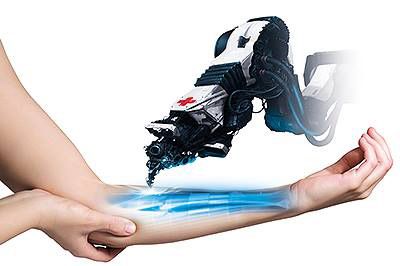Japanese scientists have identified a gene called hyperactive ladybird homeobox 1 (LBX1), which runs a genetic chain reaction that causes the spine to grow abnormally, thus contributing to scoliosis.
“Studies such as this, which define genes responsible for the development of scoliosis can help further develop a genetic test to detect scoliosis before symptoms appear,” study author Professor Chisa Shukunami from the University of Hiroshima said.
The researchers conducted genetic experiments using zebrafish. They genetically modified the fish so they had too much LBX1, and then watched as they grew.
The results showed in the zebrafish embryos, in which were introduced the additional LBX1 gene, cells responsible for the development of the spine and back muscles were wider than in healthy fish. In the fish that lived long enough, the bones in the back were deformed, leading to the development of scoliosis. Researchers believe that this model is a version of congenital scoliosis in humans.
Another group of zebrafish were genetically modified to carry additional genes expressing LBX1 throughout their lives, but only in certain cells. Some of these fish evolved with bones in their correct form, but as they matured, they started distorting the spine. This pattern is typical for most cases of scoliosis in humans as curvature of the spine occurs just before or during adolescence.
Adolescent idiopathic scoliosis affects 2-4% of children aged 10 to 16 years. Most often it occurs in girls.
During the experiments, the researchers found that scoliosis more often developed in female zebrafish rather than in males. The reasons for this phenomenon remains a mystery.
“A deeper understanding of the genetic mechanisms that lead to the development of adolescent scoliosis, will help us to develop genetic tests to detect the disease,” Shukunami said.
The study was published in the journal “PLOS Genetics”.
http://journals.plos.org/plosgenetics/article?id=10.1371%2Fjournal.pgen.1005802
Advanced biotech technology exists in Ukraine. Unfortunately, we tend to think that good clinics, advanced technology and professional doctors only exist abroad. While, the medical system in Ukraine is far from ideal in general, and we must lose this inferiority complex because is not necessary to go far to get expert help of professionals. The Bioengineering Rehabilitation for Wounded project for the past 18 months has proven it. For the wounded soldiers this advanced technology is the only way to avoid disability and physical limitations. And it is here in Ukraine we can provide this assistance. The number of men who have been put on their feet, by the project doctors is growing. However there are many more wounded military personnel in need of this medical care which can not be provided in public institutions, or even abroad. So once again we ask you to get involved in fundraising to support wounded Ukrainian military personnel.
Soldiers for treatment for whom fundraising continues:























































